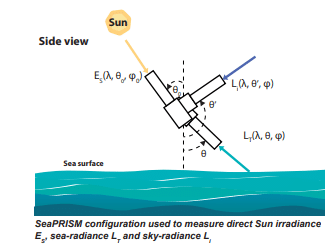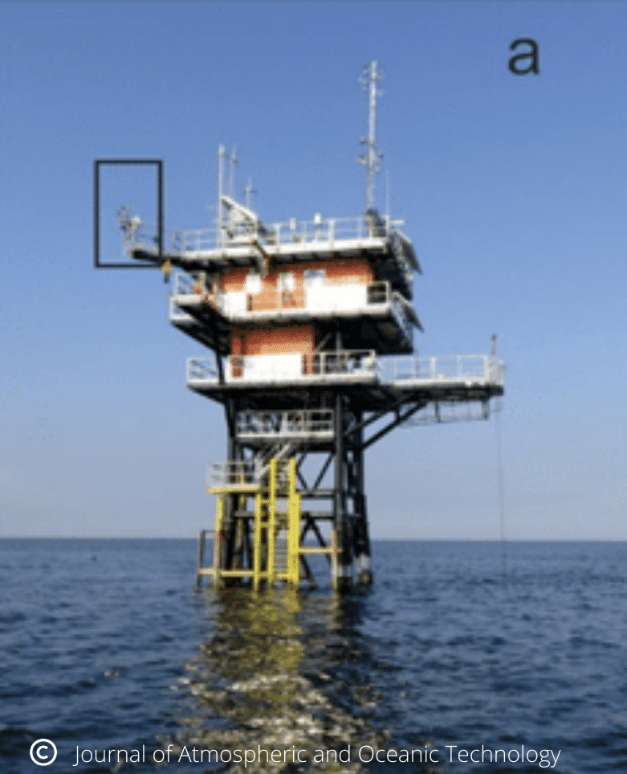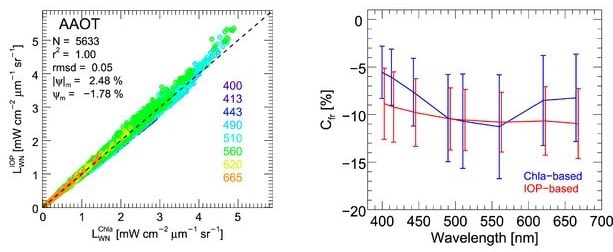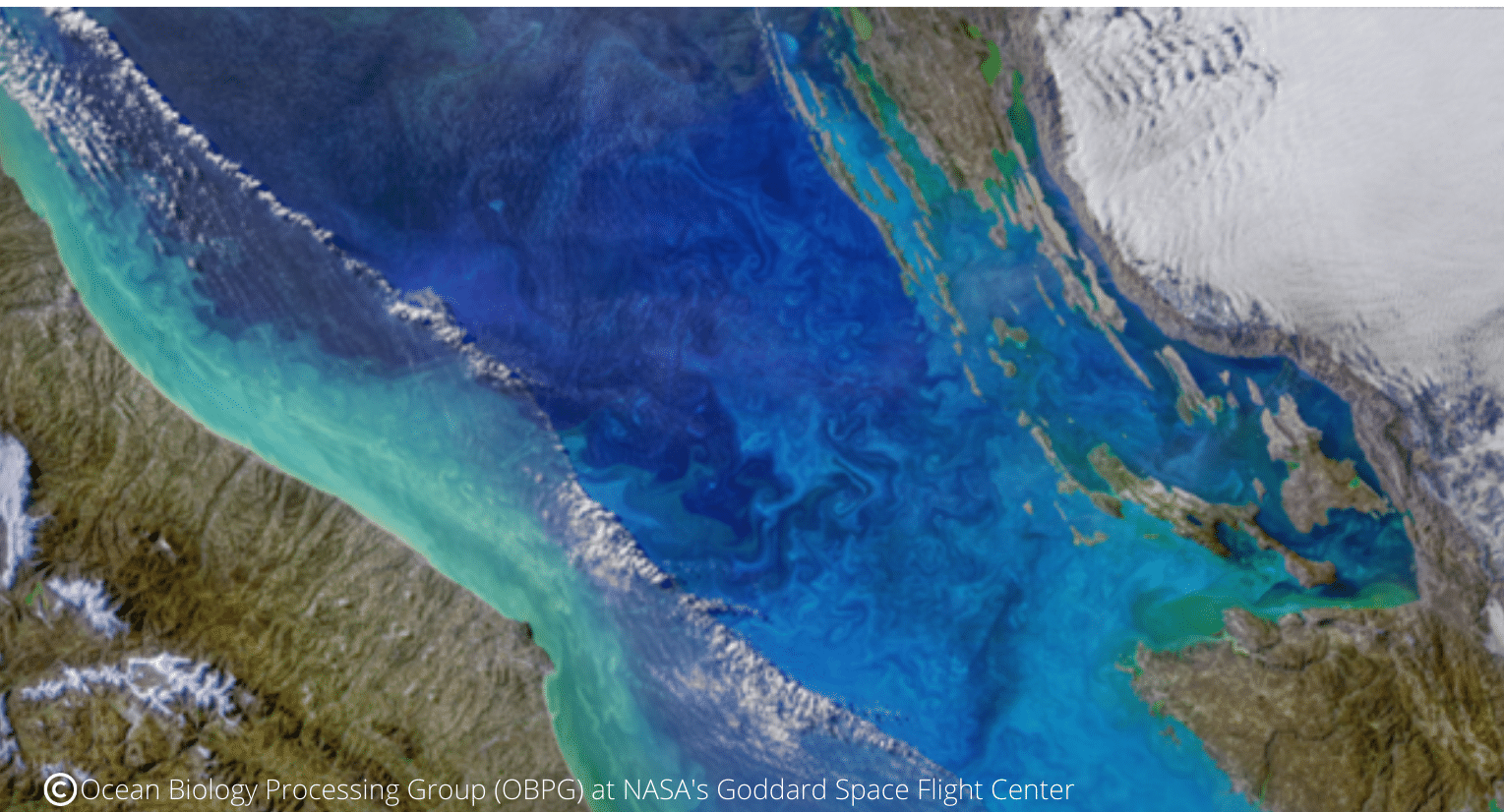The implantation of CE318-T photometers on offshore and coastal platforms constitutes a major turning point for atmospheric and ocean color applications.
Keywords : Aerosols, photometer, water radiance, monitoring, ocean properties, ocean color, Earth observation, remote sensing, CAL/VAL, SeaPRISM.
17th December 2021
The main substances that affect the color of the ocean include dissolved organic matter, living phytoplankton with chlorophyll pigments, and non-living particles like marine snow and mineral sediments. Ocean color data have a critical role in operational observation systems monitoring coastal eutrophication, harmful algal blooms, and sediment plumes. Scientists rely on satellite observations to monitor Ocean Color (OC) parameters, such as chlorophyll a concentration (Chla) and inherent optical properties of water (IOP), to better understand the role of the ocean in the Earth’s climate.
However, the current satellite measurement systems can provide only coarse spatial resolution, with relevant lack of data.
Thus, AERONET Ocean Color saw the light of day in 2002. This new component of AERONET (NASA AErosol RObotic NETwork) aims at providing more data concerning satellites measurements as there is a lack of insights in the monitoring of marine aerosols and water radiance. Since 2002, more than 31 OC measurement sites have been integrated on the network through offshore fixed platforms and coastal platforms all around the world.
Its particularity is that the measurements are taken from the radiance emerging from the sea using CE318-TV12-OC (SeaPRISM) Cimel photometers. By measuring the water radiance from the sea with instruments installed on coastal/offshore platforms or boats, Cimel improves the accuracy of satellites measurements. AERONET decided in 2015, after full validation, to accept only the CE318-T for new photometers entering the network. Below is a representative drawing of the measurement principle of the CE318-TV12-OC (SeaPRISM) photometer:

Many missions are conducted by AERONET-OC to collect ocean color data and measurements. Below, one of these campaigns conducted on an offshore platform (AAOT) in the Adriatic Sea.


Figure 3: Measurements performed at AERONET-OC AAOT – Scatterplot of LIOP WN(λ) versus LChla WN(λ).
Click Here to read the article!
Citation: Zibordi, Giuseppe, Brent N. Holben, Marco Talone, Davide D’Alimonte, Ilya Slutsker, David M. Giles, and Mikhail G. Sorokin. «Advances in the Ocean Color Component of the Aerosol Robotic Network (AERONET-OC)”, Journal of Atmospheric and Oceanic Technology 38, 4 (2021): 725-746, accessed Sep 17, 2021, https://doi.org/10.1175/JTECH-D-20-0085.1

